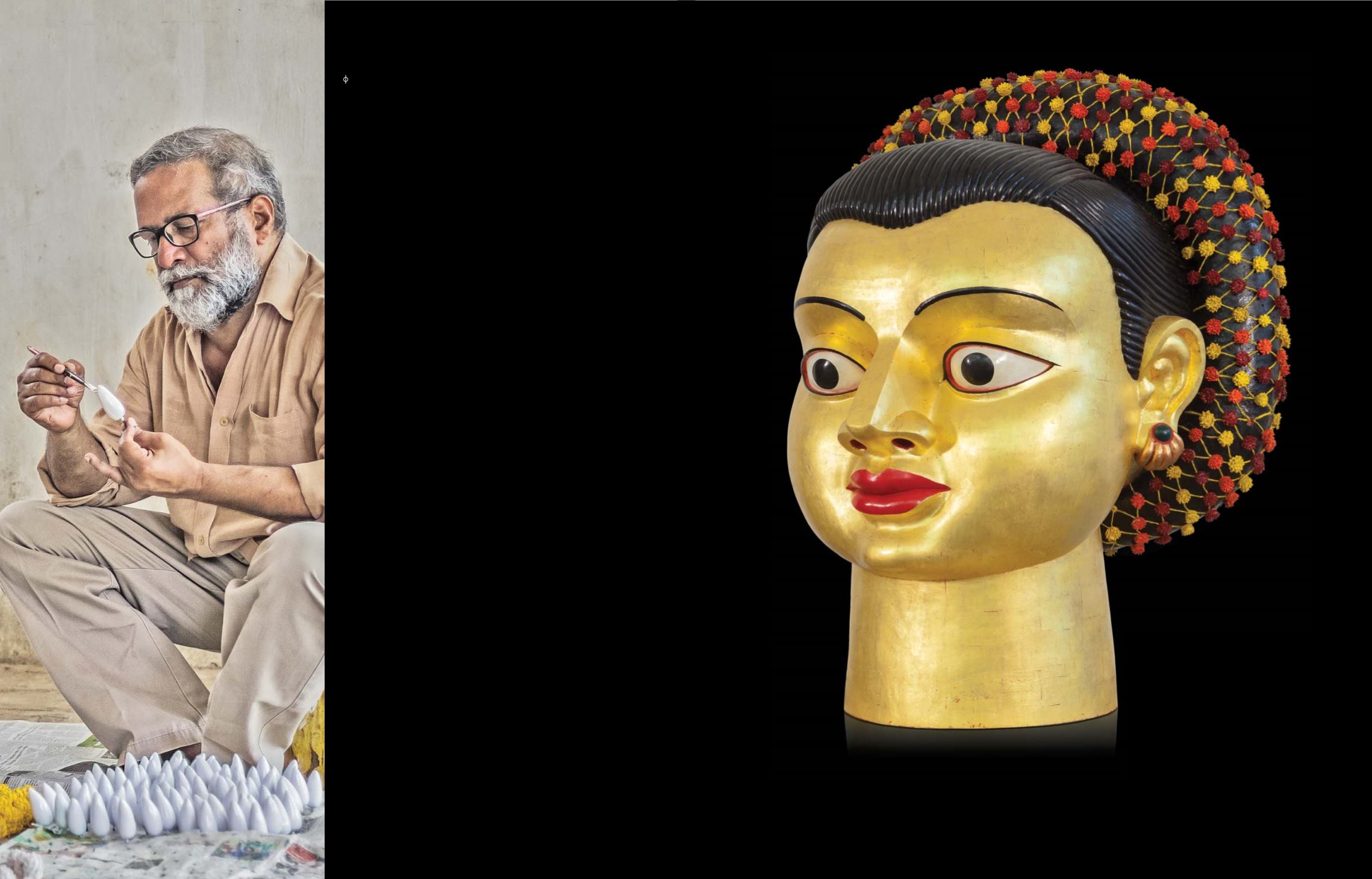

144
145Ravinder Reddy at work
Image courtesy of Barla Bhargav
Ravinder Reddy’s
Devi
is a striking combination of tradition
and kitsch, referencing the various iconic forms of the
Goddess since antiquity. Taking from the canon of classical
Indian sculpture, the gold and red tones are reminiscent of
the painted wooden images seen in South Indian temples.
The scale and bright colours, which are according to the
artist, typical of India, make the sculptures equally attuned to
the pop art idiom of contemporary street art. Reddy began
making monumental heads of women in the mid–1990s
and they have come to epitomise his interest in blending
the old with the new not just in form, but also in technique.
According to Reddy, “Fibreglass has no colour or history
behind it, it can take any shape and form. I am interested
in concept and presenting it, not the material.” (Akhila
Ranganna, “Why Sculptor G Ravinder Reddy is obsessed with
large, disembodied heads of women”, 18 August 2017,
Scroll.
in
, online) The present lot is monumental in its scale and
impact.
71
G RAVINDER REDDY
(b. 1956)
Devi
1998
Synthetic polymer paint and gold leaf on
polyester resin fiberglass
Height: 111.5 in (283.2 cm)
Width: 91 in (231.1 cm)
Depth: 94.5 in (240 cm)
Rs 2,00,00,000 ‒ 3,00,00,000
$ 317,465 ‒ 476,195
EXHIBITED
Private Mythologies: Contemporary Art from India
,
Tokyo: The Japan Foundation Asia Center,
17 October ‒ 29 November 1998
Partage d'Exotismes
, Lyon: 5th Biennale de Lyon,
27 June ‒ 24 September 2000
Popular Cultures
, Pittsburg: The Andy Warhol Museum,
7 June ‒ 2 September 2001
Monumantal Sculptures
, New York: Deitch Projects,
8 September ‒ 27 September 2001
Devi
, Washington, DC: Sackler Museum,
4 November 2001‒ 17 March 2002
New Delhi New Wave
, Milan: Primo Marella Gallery,
22 November 2007 ‒ 12 January 2008
PUBLISHED
Jerome Neutres ed.,
New Delhi New Wave
, Bologna: Damiani
Editore, 2007, cover and pp. 34, 37, 41 (illustrated)
“I strive for something iconic and monumental that transcends the boundaries of culture, nature and geography.” RAVINDER REDDY

















